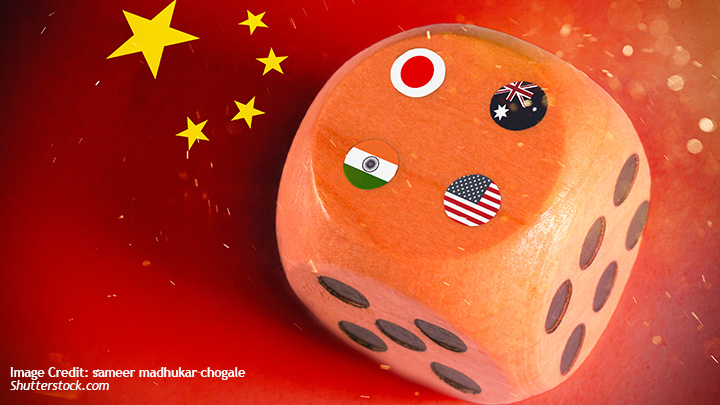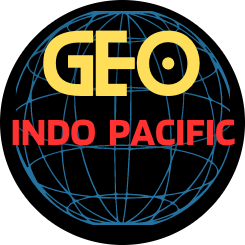
The Indo-Pacific region has emerged as the world’s most strategically significant arena, home to vital sea lanes, booming economies, and escalating geopolitical rivalries. China’s aggressive expansion in this region—through military buildup, economic coercion, and diplomatic influence—poses a direct challenge to U.S. interests and global leadership. For Washington, Beijing’s growing dominance is not just a regional concern but a fundamental threat to American security, economic stability, and democratic alliances.
China’s dominance in the Indo-Pacific region has become a growing concern for the United States due to several strategic, economic, and military factors. The Indo-Pacific is a vital area for global trade, with key shipping lanes like the Strait of Malacca facilitating the movement of goods and resources. China’s aggressive expansion in this region threatens the balance of power and undermines international norms.
One of the primary reasons for alarm is China’s military buildup, including the development of artificial islands in the South China Sea equipped with missile systems and military bases. These actions challenge the freedom of navigation and territorial sovereignty of neighboring countries. Additionally, China’s naval modernization and increasing presence in the Indian Ocean signal its intent to control critical maritime chokepoints.
Economically, China’s Belt and Road Initiative (BRI) has enabled it to gain influence over smaller nations in the Indo-Pacific by providing loans and infrastructure investments. However, the debt-trap diplomacy associated with BRI has raised concerns about countries losing sovereignty over strategic assets if they fail to repay loans.
China’s dominance also poses a direct challenge to U.S. alliances in the region, such as those with Japan, South Korea, Australia, and India. The United States relies on these partnerships to counterbalance China’s influence and maintain regional stability. Beijing’s efforts to isolate Taiwan and expand its influence in Southeast Asia further exacerbate tensions.
The U.S., in response, has sought to strengthen its presence in the region by forming new alliances like the Quad (India, Japan, Australia, and the U.S.) and the AUKUS pact (Australia, the U.K., and the U.S.), as well as reinforcing its military bases in Guam and Hawaii. However, the growing capabilities of China’s military and its economic leverage make it increasingly difficult for the U.S. to maintain dominance in the Indo-Pacific.
China’s ambitions in the Indo-Pacific are not just about regional power; they have global implications. If left unchecked, China’s dominance could reshape the world order, undermine democratic values, and jeopardize the rules-based international system that has been the cornerstone of global stability since World War II. For the U.S., countering this influence is not just a matter of regional security but a strategic imperative to protect its global interests and maintain its leadership role.
1. Military Expansion and Territorial Aggression
China’s rapid militarization of the South China Sea, including the construction of artificial islands and military bases, directly challenges freedom of navigation—a cornerstone of U.S. naval strategy. By asserting unlawful claims over territories also contested by Vietnam, the Philippines, and Taiwan, Beijing is undermining international law, particularly the United Nations Convention on the Law of the Sea (UNCLOS).
The People’s Liberation Army (PLA) has significantly expanded its naval and missile capabilities, with ambitions to dominate the “first island chain” (stretching from Japan to the Philippines). China’s anti-access/area denial (A2/AD) strategy threatens to push the U.S. military out of the Western Pacific, weakening America’s ability to defend allies like Japan, South Korea, and Taiwan.
2. Economic Coercion and Debt-Trap Diplomacy
China’s Belt and Road Initiative (BRI) has allowed it to gain strategic leverage over Indo-Pacific nations through massive infrastructure investments, often leading to debt dependency. Countries like Sri Lanka and Pakistan have faced severe economic crises after being unable to repay Chinese loans, forcing them to concede ports and resources.
Additionally, Beijing has weaponized trade, as seen in its economic retaliation against Australia for demanding a COVID-19 origin investigation. Such tactics signal that China is willing to use economic pressure to silence dissent and bend nations to its will—a direct challenge to the U.S.-led liberal economic order.
3. Undermining U.S. Alliances and Regional Influence
The U.S. has long relied on alliances like ASEAN, QUAD (U.S., Japan, India, Australia), and AUKUS (U.S., UK, Australia) to maintain stability in the Indo-Pacific. However, China has been actively weakening these partnerships through divide-and-rule tactics, offering economic incentives to nations like Cambodia and Laos while isolating those that resist, such as the Philippines under Duterte’s pro-China shift.
Moreover, Beijing’s growing influence over Pacific Island nations (via security pacts like the one with the Solomon Islands) threatens to cut off U.S. military access and establish Chinese naval footholds close to American territories like Guam.
4. Threat to Taiwan and Risk of Major Conflict
Taiwan remains the most explosive flashpoint. China’s increasing military drills and threats of invasion challenge the status quo that has maintained peace for decades. A Chinese takeover of Taiwan would:
- Give Beijing control over semiconductor supply chains (TSMC produces over 60% of the world’s chips).
- Allow China to dominate the First Island Chain, effectively locking the U.S. out of the Western Pacific.
- Embolden further aggression, including against Japan and the Philippines.
The U.S. is legally bound by the Taiwan Relations Act to assist in Taiwan’s defense, meaning any Chinese invasion could trigger a direct U.S.-China war—a catastrophic scenario for global security.
5. Challenge to Democratic Values vs. Authoritarian Expansion
Beyond military and economic threats, China’s rise represents an ideological battle. Beijing promotes an authoritarian model of governance, undermining democratic norms by supporting regimes like Myanmar’s junta and suppressing pro-democracy movements in Hong Kong. If China succeeds in dominating the Indo-Pacific, it could inspire other autocracies to challenge U.S. influence worldwide.
Conclusion: Can the U.S. Counter China’s Dominance?
The Biden administration has responded with the Indo-Pacific Strategy, strengthening alliances, increasing naval presence, and promoting alternatives to BRI. However, China’s rapid advancements mean the U.S. must act decisively—through military deterrence, economic resilience, and diplomatic unity—or risk losing its primacy in the most critical region of the 21st century.
For America, the stakes are clear: If China controls the Indo-Pacific, it controls the future of global power. The time to counter Beijing’s ambitions is now—before it’s too late.





